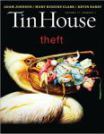What Is a Literary Journal? And How Do I Get Into One?

There are lots of magazines out there. Ones you might be more familiar with are the ones you can buy at the grocery store check-out aisle—Elle, Vogue, People, Cooking Light. You know, that stuff. But most of these magazines publish work that is along the lines of journalism, or occasionally creative non fiction (CNF) and criticism (reviews). Magazines you might not be as familiar with are literary journals. You probably won’t find these at the grocery store. You might, but it’s probably just The New Yorker. The Paris Review if you’re at some schmancy place. These are some of the oldest and most celebrated literary magazines in the world, and they publish creative nonfiction, criticism, fiction, poetry, and other in-between-y type pieces. But they’re just drops in the ocean of the lit mag establishment.
So what is a literary journal?
Let’s go back a bit. Literary journals — or literary magazines — have been around for quite a while. The first literary magazine on record was a French periodical called Nouvelles de la Republique des Lettres, established in 1684. Of course, we’ve done a lot since then. The oldest literary magazine in the United States is the North American Review (formerly The Monthly Anthology), which began publication in 1803 (though the Yale Review, begun in 1819, is the oldest literary magazine with continuous publication, as NAR suspended publication during WWII). And the oldest magazine dedicated to poetry is thought to be Poet Lore, which began publication in 1899.
History! So much of it. We could be here all day — the old establishment of literary magazines in the US, Canada, UK, and around the world is vast and long. So let’s move on and see what else there is to know about literary journals.






What are the different kinds of literary journals?
This is where it might seem to get trickier, but if you’re doing a little bit of homework, it should be easy to suss out. Let’s start with independent lit mags versus university journals. Many journals—like New England Review at Middlebury College, the aforementioned Yale Review, the Southwest Review run by Southern Methodist University, Post Road at Boston College (and, for funsies, both James Franco and I have been in this mag, in separate issues)—are affiliated with colleges and universities. Often these magazines are funded by the college (or have some funding from the college) and are run by a combination of students, faculty, and alumni volunteers. Most of these journals will have a description of how they run their magazine and who edits it somewhere on their website. Independent magazines, like The Paris Review, Tin House, 32 Poems (and many others) have no university affiliation or funding.
Of course, there are magazines for every type of writing and every genre and market imaginable. From loose genre/market rules (like Asimov’s and Shimmer, which publish sci fi and fantasy, Ellery Queen Mystery Magazine which focuses on mystery/noir, and Cicada which publishes work for young adult audiences) to more specific guidelines and missions (Bellevue Literary Journal only publishes work that has to do with health and medicine, Frogpond only publishes haiku, or Asymptote that only publishes work in or about translation) and there are magazines that are for specific regional (Midwestern Gothic) or ethnic (Callaloo) or gender identities (Room), that are written for and by the LGBTQ community (Assaracus, Adrienne), for work by people in certain age groups (teens or writers over 50, for example).
There are magazines that only publish poetry (Southern Poetry Review, Magma Poetry), only publish fiction (Zoetrope: All-Story, One Story) only publish reviews and interviews (Rain Taxi), etc., etc. There are newer journals (Sugared Water, Whale Road Review, Ugly Duckling Presse’s 6×6, (parenthetical), The James Franco Review (for real!), Hermeneutic Chaos), older, established journals (Ambit, The Sewanee Review, AGNI, Poetry London, Poetry New Zealand, Salamander) online journals (The Rain, Party, & Disaster Society, Noble / Gas Qtrly, Cordite, ) and print-only journals (Poetry, Going Down Swinging, jubilat) as well as magazines who publish content both in print and online (Juked, Guernica, [PANK], Barrelhouse). There are even mags taking advantage of new technology for e-readers and other devices, like NonBinary Review. (I’m partial to them. Totally nepotism there. But they’re truly great.)






Do I have to be from the US to submit
to a US-based magazine?
Most magazines do not care where you are from or where you currently live. What matters is the writing, and whether it follows the guidelines and fits their magazine’s aesthetic. Some journals do have regional affiliations and publish only work from writers of a certain background or from a certain country, state, region, etc. Some magazines have funding from grants that require them to publish a certain amount of literature from authors in their country (The UK, Canada, and Australia all have journals like this, so it can be harder for an American author to get into their magazines if they have certain types of funding.) But this will always be in the magazine’s guidelines. If they are only for work by Californians, and you don’t live in or haven’t lived in California, well, that magazine isn’t for you. But there are lots of other magazines.

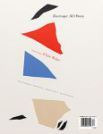





How do I submit work?
Read. The. Guidelines.
Every magazine has the guidelines on their website and possibly in the issues of their magazines. I’d encourage you to familiarize yourself with magazines before you submit, research what markets are best for you and your writing, and (of course) only send out your most polished work. If you can’t afford to buy issues, many libraries have subscriptions to literary magazines, and most magazines have at least SOME online content that you can check out.
Follow the guidelines to a T, even if they seem silly to you. Not following the guidelines can get your submission tossed out before it’s even read. Some magazines will want a cover letter, which is very much like a cover letter you’d write applying for a job — greeting, what you’re submitting, little bio (listing a few publications if any) and a cordial sign-off. Some magazines don’t want a cover letter, want a third person bio submitted separately, or read blind and require you to send a separate cover page so that they can read your work (and the work of others) without bias.
You may encounter reading fees. These usually are $5 and under, most often around $3. This is typical now, even though even five or six years ago it was considered taboo. There are sometimes ways to get around reading feed if you can’t afford them. You could skip submitting to these journals altogether. Some magazines will waive the fee for students or subscribers. And some magazines will allow postal submissions fee-free.

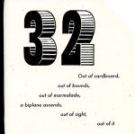




Where do I even get started?
There are tons of fantastic resources out there for writers new and established looking for places to send their work. My favorite is duotrope, which helps you keep track of deadlines, let’s you search for magazines using lots of different criteria, and also helps you keep track of your submissions. It costs $5 per month to use or $50 per year. You can also keep an eye on NewPages.com which posts regular calls for submissions, writing contests, and reviews of literary magazines. If you’re a more paper book analog type, you can always check out Writer’s Market.
There are are also some blogs I live that regularly post opportunities, like those of authors Trish Hopkinson and Nancy Chen Long. And, of course, there’s always The Review Review, which, yes, reviews literary journals.
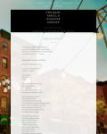





What if I get rejected?
You will. I got a rejection from North American Reviewthe night I wrote this piece. And one from FIELD the day before. And I personally was probably sending work out for over a year before I got my first acceptance. Everyone’s writing journey is different, but no matter how “big” you get or how new you are, there will be more rejections than acceptances. If you get feedback, take it with grace. If you don’t, and a piece keeps getting rejected, get peer feedback and revise then send it back out. The key here is to not let rejection get you down.






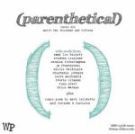
In summary…
There’s a lit mag for everything. And if you’re ready to start getting your work out to mags, do your homework and send that stuff out. It might take a while, but good writing gets published. So start reading some lit mags. I’ve highlighted some gems here in this article. I hope you enjoy them!

















